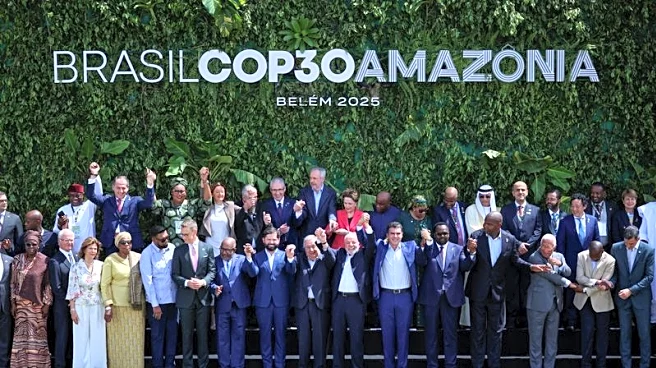What's Happening?
A recent collection of papers published in Nature explores the multifaceted issues of urban inequalities and sustainability. The research covers various disciplinary approaches and provides evidence from
all continents, focusing on the complexities of urbanization and its associated economic growth. The study utilizes Zipf's Law to analyze the distribution of topics within the collection, revealing a homogeneous distribution of subjects such as population, energy, poverty, climate, housing, income, social aspects, transport, digitalization, and risk. These topics highlight the diverse dimensions of inequalities affecting cities, including income disparities, accessibility issues, and exposure to social, technological, and climate risks.
Why It's Important?
The findings underscore the critical challenges cities face in balancing economic growth with sustainability and equity. Urban areas, while being engines of economic development, also contribute significantly to global pollution and social disparities. The study's insights into recurring themes such as climate risk and social inequality are crucial for policymakers and urban planners aiming to create more equitable and sustainable urban environments. Addressing these issues is vital for improving the quality of life in cities and ensuring long-term resilience against environmental and social challenges.
What's Next?
The research suggests a need for comprehensive urban policies that address the identified inequalities and sustainability challenges. Policymakers may focus on integrating climate risk management, enhancing social equity, and improving urban infrastructure to mitigate the adverse effects of urbanization. Future studies could expand on these findings by exploring specific interventions and strategies that cities can adopt to foster sustainable development and reduce disparities.
Beyond the Headlines
The study's use of Zipf's Law to analyze topic distribution offers a unique perspective on the interconnectedness of urban issues. This approach highlights the importance of considering linguistic and conceptual patterns in understanding urban dynamics. The recurring themes identified in the research may influence future urban studies and policy formulations, emphasizing the need for interdisciplinary approaches to tackle complex urban challenges.













